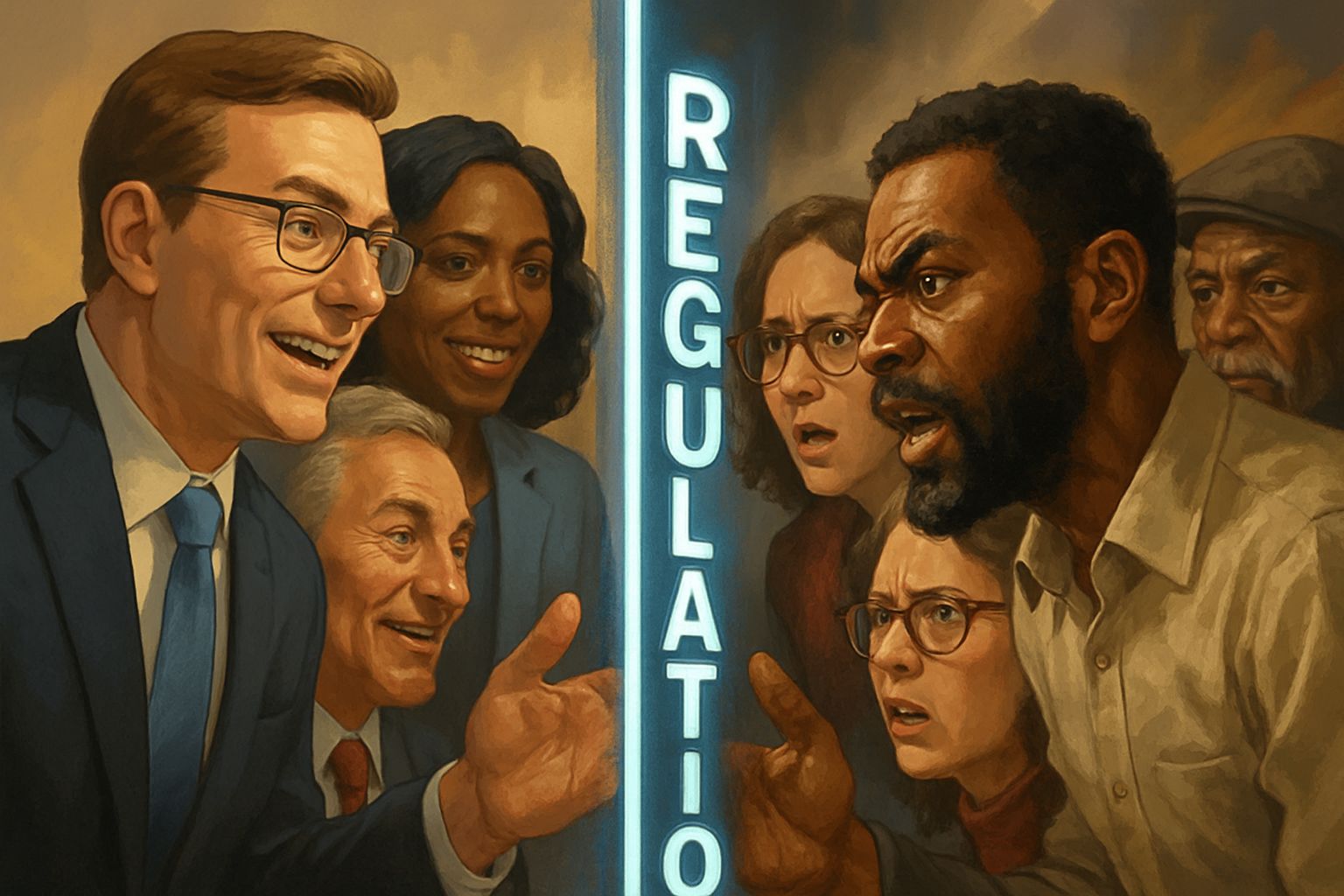
AI CERTS
20 hours ago
Trump AI Regulation Clash: Federal Preemption Battle
Draft Order Overview Details
Reuters obtained the six-page draft on November 19. Subsequently, analysts noted four primary directives. First, the Attorney General would form an “AI Litigation Task Force.” Second, the Commerce Department must catalog state statutes within 90 days. Third, agencies could withhold Broadband Equity, Access and Deployment grants from non-compliant states. Fourth, the FTC and FCC would explore nationwide disclosure requirements. Altogether, the draft relies on Executive Order power rather than new legislation.

Supporters highlight efficiency and national competitiveness. However, critics say the order overreaches and risks years of court battles. These points preview later sections. Therefore, understanding the text’s mechanics is essential before assessing broader impacts.
The draft’s mechanisms reveal aggressive intent. Nevertheless, real-world implementation remains uncertain without presidential signature. This uncertainty directs attention to statewide activity.
State Laws Rapid Surge
States have not waited for Washington. According to NCSL, over 1,000 AI bills surfaced in 2025, with roughly 100 enacted. Moreover, pioneering laws in California, Colorado, Utah, and Texas address bias audits, deepfakes, and procurement standards. In contrast, some states opted for study commissions only.
Key 2025 statistics include:
- 1,000+ introduced AI bills nationwide
- 75–100 enacted measures across sessions
- $42 billion BEAD funding potentially at risk
Consequently, firms face a patchwork of mandates that complicate compliance plans. Sam Altman warned that conflicting rules “would be a real mess.” Therefore, companies lobby for a single Federal Standard.
States argue they move faster than Congress and tailor protections locally. Nevertheless, rising administrative burdens intensify calls for harmonization. These competing pressures feed industry demands reviewed next.
Industry Backs Uniform Rules
Major AI vendors and venture investors favor a Federal Standard to streamline audits, reporting, and product launches. Furthermore, trade coalition TechNet praised the draft pause, hoping Congress will codify uniform requirements. OpenAI, Google, and Anthropic each released statements supporting national clarity. Additionally, Andreessen Horowitz stressed global competitiveness against China.
Proponents claim that multiple disclosure forms drain talent and capital. Consequently, startups could relocate abroad if domestic uncertainty persists. They also argue that a well-crafted Executive Order might accelerate interim consistency before legislation arrives.
Industry optimism rests on reduced duplication and faster deployment. However, civil-society challenges remain strong, as the next section explains.
Civil Liberties Raise Concerns
Civil groups, including the ACLU, EPIC, and Public Citizen, warn that sweeping Preemption harms vulnerable communities. Moreover, Robert Weissman labeled the draft “almost unfathomable.” Calli Schroeder added that local guardrails are vital because algorithmic decisions lack transparency.
State attorneys general echo these worries. They view conditional funding as coercive and contrary to federalism principles. In contrast, administration allies emphasize interstate commerce impacts. Nevertheless, litigation likely follows any grant withdrawal.
Advocates highlight privacy, discrimination, and deepfake dangers requiring agile state action. These points underscore legal challenges explored below.
Legal Hurdles Timelines Analysis
Experts agree an Executive Order cannot itself nullify statutes. Therefore, success hinges on agency rulemaking, DOJ lawsuits, and grant conditions. Crowell & Moring note dormant Commerce Clause arguments may succeed in certain circuits. However, state defenses cite police powers and congressional intent.
Senate history offers caution. Earlier in 2025, a 99–1 vote rejected tying Preemption to BEAD funds. Additionally, courts scrutinize financial inducements that appear unduly coercive. Consequently, litigation could last years, delaying clarity.
Legal complexities slow enforcement momentum. Nevertheless, political negotiations continue and shape forthcoming steps.
Potential Next Steps Ahead
Observers track five immediate signals. First, whether the White House revives or revises the draft. Second, any Commerce guidance affecting grants. Third, formation of the DOJ task force. Fourth, insertion of Preemption clauses into must-pass bills, especially the NDAA. Fifth, early lawsuits filed by states or civil groups.
Professionals can enhance their expertise with the Bitcoin Security™ certification. Consequently, leaders better navigate intersecting technology, compliance, and risk domains.
These indicators determine where future Regulation is forged. Meanwhile, companies should map multistate obligations and engage in federal consultations.
The roadmap illustrates shifting power dynamics. Therefore, continuous monitoring remains essential for strategic planning.
Conclusion And Outlook
Trump’s leaked draft crystallizes the enduring clash between national uniformity and state innovation. Moreover, industry champions seek a Federal Standard to lower costs, while civil advocates defend local safeguards. Legal analysts predict prolonged battles over Preemption tools embedded within any Executive Order. Consequently, organizations must prepare for overlapping frameworks. Nevertheless, proactive education, such as the linked certification, strengthens compliance readiness. Finally, stay alert for agency moves and legislative amendments, and join the discussion to shape responsible Regulation.



